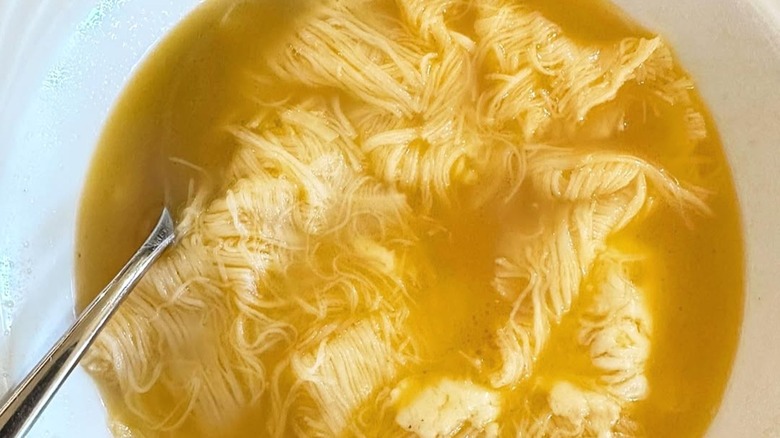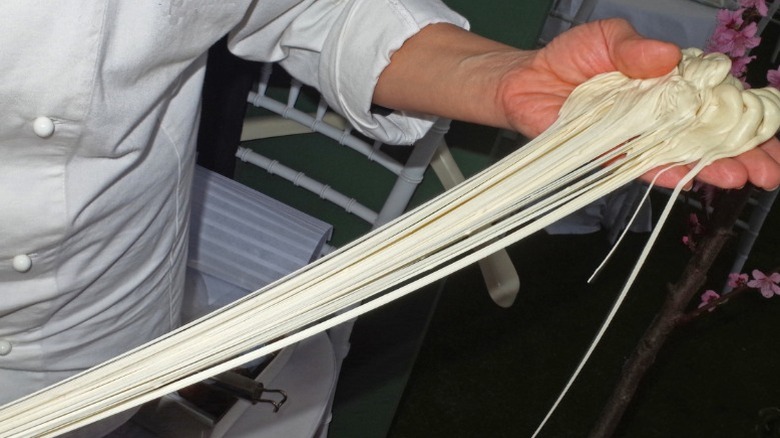The Rare Pasta That Pilgrims Hike 20 Miles To Eat
How far would you walk to eat your favorite food? A mile? Five miles? 10 miles? Well, there's a certain kind of pasta made in Sardinia, an island off the coast of Italy, that can only be eaten by people who walk 20 miles as part of a pilgrimage. It's called "su filindeu," or "threads of god," but you can call it filindeu for short. Walking three-quarters of a marathon might sound like a long journey for pasta, but it's not like you'll be able to pick up some filindeu at your local Trader Joe's to serve with their iconic pink sauce. This is the rarest pasta on Earth, and fewer than a dozen people in the entire world know how to make it.
Even if you do make it to Sardinia, you won't be able to tuck into a bowl of filindeu at any time of year. It's made twice yearly, as part of the aforementioned 20-mile pilgrimage to a sanctuary in the small town of Lula. As you might expect from something called "threads of god," filindeu is ultra, ultra-thin: "angel hair pasta" would be an equally apt name for these gossamer strings. These noodles are boiled in sheep's broth and served with a generous sprinkling of pecorino cheese (which is also used in cacio e pepe), but the story of how they're made is even more interesting than how they're served.
Su filindeu is incredibly difficult to make
There's a reason why only about 10 people know how to make su filindeu, and it's not a matter of secrecy (like, say, chartreuse, the recipe for which is known only by a pair of French monks); it's because filindeu really is that hard to make. It requires only three ingredients — salt, water, and semolina flour — but the process requires an enormous amount of patience, as well as the kind of intuition you can only get with years of practice. Practitioners stretch, fold, and pull the dough eight times, resulting in 256 hair-thin strands of pasta.
A number of chefs, including Jamie Oliver, have visited Sardinia to learn the secret of su filindeu, and most of them gave up very shortly thereafter; a select few, like the Los Angeles-based chef Rob Gentile, managed to persevere to the point where they could serve the dish at their own restaurants. As for the masters of filindeu who live on Sardinia, most of them are older women, some of whom have had trouble passing on the tradition to the next generation once it became clear how much effort it required. Still, there was a time when as few as three people knew how to make the pasta, so su filindeu actually occupies a less precarious position now than it has in the recent past.

